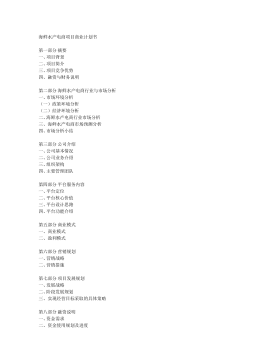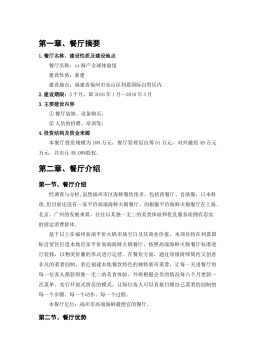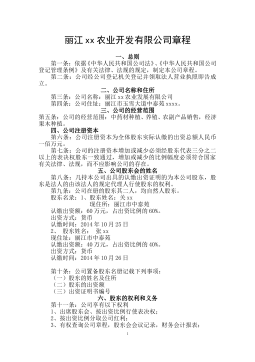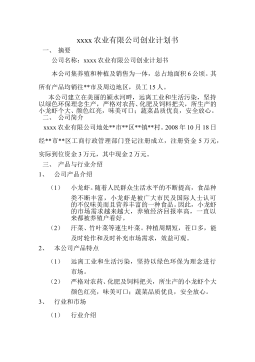美国总统就职演说中概念隐喻的认识分析
VIP免费
II
ABSTRACT
The study to metaphor starting from Aristotle 300B.C., has experienced more than
two thousand years. There are mainly three periods, the stage of rhetorical study, of
semantic study and of the study from various views. The main theories concerning
metaphor are “Comparison Theory”, “Substitution Theory”, “Interaction Theory”,
“Conceptual Metaphor Theory”, “Conceptual Blending Theory” and some pragmatic
views on metaphors.
This thesis analyzes metaphors in accordance with cognitive linguistics. As a new
branch of linguistics and new way of researching, cognitive linguistics emerged a few
years ago. It treats language as a cognitive action, and studies how the meaning and the
use of language are affected by the way people experience the world. With the
Experiential Realism as the philosophical base, there are mainly conceptual metaphor
theory, cognitive categorization theory, image-schema theory and idealized cognitive
model theory in cognitive linguistics.
Conceptual metaphor theory by Lakoff and Johnson (1980) studies metaphors
cognitively. According to this theory, a metaphor is a way of thinking, and most of our
concepts are metaphorical. These metaphorical concepts reflect and determine
ourselves and our cognition to the world, because it is originated from experience and
transmitted by culture. This thesis analyzes the main content of conceptual metaphor
theory, the metaphoric cognitive model, the experiential basis and the cognitive
functions of conceptual metaphors.
The corpuses in this thesis are the American presidential inaugural speeches.
Belonging to political public speeches, presidential inaugural speeches are very
important in the American society, culture, and political life. Within the limited span of
time, these speeches should explore some important political issues, attract the
audience, motivate their enthusiasm, persuade and gain support form the public.
Because of all these features, there are large quantities of metaphors used in speeches,
which can serve as the corpus of metaphor analysis. Furthermore, the American
presidential inaugural speeches bear some unique features. As the U.S.A. is the most
developed country in science and economy in the world, at the same time, its culture is
particular, because of the people is composed of various immigrants.
III
The analysis follows the five-step procedure from Steen in identifying metaphors.
Conceptual metaphors are summarized according to conceptual metaphor theory and
classified according to target domains into four groups, the groups of metaphors with
economy, religion, politics and law as target domains. The main structures, cognitive
features and experiential basis are analyzed systematically. At last, based on the
speeches themselves and the social cultural background, the cognitive functions of
conceptual metaphors in reaching the persuasion aim are discussed, and the practical
implications of cognitive study on conceptual metaphors are discussed. The main
cognitive functions of conceptual metaphors in realizing the persuasion aim are
emotional motivating, evaluating, analogizing, bridging, simplifying, filter, and so on.
In the practice of teaching and learning English, this study helps students a lot in using
and understanding metaphor, in reading comprehension, writing and translation. It also
has great significance in cross-culture communication teaching.
Key Words: Conceptual Metaphor, Cognitive Analysis, the American
Presidential Inaugural Speeches
IV
摘要
有关隐喻的研究源远流长,自亚里士多德至今已经历了两千多年的时间,共
分为修辞学研究时期,语义学研究时期,和多学科研究时期。主要出现了“比较
论”、“替代论”、“互动论”、“概念隐喻”、“概念整合”理论及一些从语用学角度
研究隐喻所产生的理论。
本文采用认知语言学的主要理论对隐喻进行分析。认知语言学是近年来国际
语言学界新兴的一个语言学学派,一种新的研究方法。其哲学基础是非客观主义
的经验现实主义哲学或简称为经验主义哲学。它认为语言是一种认知活动,并以
此为基础研究人类体验世界和观察事物的方式是如何影响语言的形式、意义和用
法。非客观主义的经验现实主义哲学体现在具体的语言学研究中即经验主义认知
观,主要形成了认知范畴化理论、意象图式理论、和理念化认知模式理论。
由莱考夫和约翰逊提出的概念隐喻理论是认知语言学的重要组成部分。它认
为隐喻的实质是一种思维方式,我们的概念大多是隐喻性的。这些隐喻性的概念
反应并决定了我们对世界的感知和对相关的人与事物的理解,因为这些概念源自
我们的体验,而这种体验通常是通过文化传达的。本文介绍了概念隐喻理论的主
要内容后,对隐喻的认知经验基础、认知模式及认知作用从理论上做了初步分析。
本文的语料是美国总统就职演说。作为政治演说的一种,总统就职演说在美
国社会文化中占有重要的地位,在政治生活中扮演着极为重要的角色。演说中含
有的大量隐喻,使其成为较适宜隐喻研究的语料。美国是世界上科技经济最发达
的国家,同时美国公民的构成也使美国的文化呈现独特的特点,这必然使其语言
也带有不同于其他英语国家的特色。
本文首先根据 Steen 的五步法确认隐喻,又根据概念隐喻理论从中概括出概
念隐喻,按目标域将其分为经济、宗教、政治、法律四组,然后详细地分析了这
些概念隐喻的构成要素、认知特点及经验基础。最后结合美国的社会文化背景及
演说本身,分析了概念隐喻在帮助实现劝说目的中的认知功能,并探讨了本文的
分析研究在英语学习和教学实践中的意义。概念隐喻在美国总统就职演说中为实
现劝说目的,主要起着激发情感、评价、类比推理、桥梁、简化、筛选等认知作
用。在实践中运用认知语言学的理论对隐喻进行分析,可以加深对文章的理解,
促进隐喻的运用,提高写作,翻译,及跨文化交际教学的水平。
关键词:概念隐喻 认知分析 美国总统就职演说
Contents
Acknowledgements ........................................................................................................... I
ABSTRACT ..................................................................................................................... II
摘要 ................................................................................................................................ IV
Chapter One Introduction ................................................................................................. 1
§1.1 A Brief Review of Metaphor Study ................................................................... 1
§1.2 The Motivation and Significance of This Study ................................................ 3
§1.3 The Corpus and Methodology Used in This Thesis ...........................................4
§1.4 The Organization of This Thesis ........................................................................ 6
Chapter Two Literature Review ........................................................................................ 7
§2.1 An Overview of Cognitive Linguistics .............................................................. 7
§2.2 The History of Cognitive Linguistics .................................................................9
§2.3 The Philosophical Base of Cognitive Linguistics: Experientialism .................10
§2.4 The Theoretical framework for this research ................................................... 11
§2.4.1 Cognitive Categorization Theory ........................................................... 11
§2.4.2 Image schema .........................................................................................13
§2.4.3 Idealized Cognitive Model .....................................................................14
Chapter Three Conceptual Metaphors ............................................................................ 16
§3.1 The Conceptual Metaphor Theory ................................................................... 16
§3.1.1 The Theory Origin ..................................................................................17
§3.1.2 The Main Components of Conceptual Metaphors ................................. 18
§3.1.3 The Working Mechanism of Conceptual Metaphors ............................. 18
§3.1.4 The Classification of Conceptual Metaphors .........................................19
§3.1.5 The Systematic & Coherent Features of Conceptual Metaphors ...........21
§3.2 The Cognitive Features of Conceptual Metaphors .......................................... 23
§3.2.1 The Experiential Basis of Conceptual Metaphors ..................................23
§3.2.2 The Metaphoric Cognitive Model ..........................................................26
§3.2.3 The Cognitive Functions of Conceptual Metaphors .............................. 26
Chapter Four A Cognitive Analysis to Conceptual Metaphors ....................................... 29
§4.1 The Identification of Conceptual Metaphors in the Corpus .............................29
§4.2 A Cognitive Analysis to Features of Conceptual Metaphors in the Corpus .....32
§4.2.1 Conceptual Metaphors Concerning Politics ...........................................33
§4.2.2 Conceptual Metaphors Concerning Law ............................................... 39
2
§4.2.3 Conceptual Metaphors Concerning Economy ....................................... 43
§4.2.4 Conceptual Metaphors Concerning Religion .........................................46
§4.3 The Cognitive Functions of Conceptual Metaphors in Realizing Persuasion . 50
§4.3.1 Motivating and Provoking Function ...................................................... 51
§4.3.2 Evaluating Function ............................................................................... 52
§4.3.3 Analogizing Function .............................................................................53
§4.3.4 Bridging Function .................................................................................. 54
§4.3.5 Simplifying Function ............................................................................. 56
§4.3.6 Miscellaneous Functions ........................................................................58
§4.4 The Implications of This Study in Langue Teaching and Learning Practice ... 59
§4.4.1 The Implications of This Study in Reading, Writing and Translation ... 59
§4.4.2 The Application of the Cognitive Metaphor Theory to the Cross-culture
Communication Teaching ................................................................................. 60
Chapter Five Conclusion .................................................................................................63
§5.1 Summary of the Findings. ................................................................................ 63
§5.2 Limitations and Suggestions for Future Study .................................................65
Appendix .........................................................................................................................66
References .......................................................................................................................67
在读期间公开发表的论文 .............................................................................................71
Chapter One Introduction
1
Chapter One Introduction
Metaphors are very common in all languages and also in our daily life. According
to Lakoff and Johnson (1980), metaphors are pervasive not just in language but also in
our thought and action, and 70% of the expressions in daily language originates from
conceptual metaphors. English is also full of the metaphorical expressions, which are
derived from conceptual metaphors (Zhao Yanfang, 1995). This phenomenon attracted
the attention of many scholars and experts two thousand years ago. Since Aristotle’s
books Poetics and Rhetoric, the study of metaphor has never stopped, and various
theories have come out.
§1.1 A Brief Review of Metaphor Study
According to Shu Dingfang(2000), the study of metaphors in western countries
has undergone several stages with mainly five schools, “Comparison Theory” by
Aristotle(300B.C.), “Substitution Theory” by Quitilian(1000), “Interaction Theory” by
Richard(1936) and M. Black(1962), pragmatic study on metaphors by Searl (1979) and
others, Cognitive study of metaphors, including “Conceptual Metaphor Theory” by
Lakoff and Johnson(1980), and “Conceptual Blending Theory” by Fauconnier and
Turner(1994).
Comparison theory, by Aristotle in his books Poetics and Rhetoric, treats a
metaphor as “a shortened form for simile, an implicit comparison of similarity based
on analogy and simile”(Yu, 1998, p. 110). The analogical relations are derived from
the presupposition that the two terms in each metaphor share similar attributes, or
meanings. The similarities are conceived existing before the discovery of the more or
less hidden analogy (Chaitin, 1996). To percept similarity out of dissimilarity is treated
as a sign of genius. Thus, metaphors are not used by common people, but by talented
persons. Metaphors have the ornamental function.
Substitution Theory, is also by Aristotle, but is developed by Quintilian.
According to Aristotle, in his books Poetics and Rhetoric, a metaphor is the
transference either from genus to species, or from species to genus, or from species to
species, or on grounds of analogy (Shu Dingfang, 2000). The analogical type develops
into the Comparison theory. Based on the first three types, Quintilian develops the
substitution theory in his book Institutio Oritoria. As what he argues, a metaphor is a
A Cognitive Study of Conceptual Metaphors in the American Presidential Inaugural Speeches
2
decorative device, the substitution for a literal term (Black, 1962). Thus, metaphors can
provide stylistic variation, and when no convenient terms exist in literal language,
metaphors can be used (Kreitman, 1999). According to this theory, the use of
metaphors should be restricted. However, for some metaphors, it is difficult to find a
literal substitution. For example, “An atom is a solar system.”
The interactive view treats a metaphor as an interaction. In Richards’ view, “when
we use a metaphor we have two thoughts of different things active together and
supported by a single word, or phrase, whose meaning is a resultant of their
interaction” (Richards, 1936, p. 216). The similarity between “the two thoughts of
different things” is called grounding, which can be something subjective and abstract
or something new to us. The power of metaphors comes from not only groundings but
also, at least equally, the conceptual incompatibility between the two different things.
And the meaning of a metaphor is generated through the interaction between them.
According to Black (1962), the two elements of a metaphorical expression are primary
subject, which is the literal remainder of the sentence, and secondary subject, referring
to the metaphorical elements, the word or words used non-literally. The similarity
between the two subjects does not pre-exist, but may be created through the interaction
of the two subjects. The interaction is that “(a) the presence of the primary subject
invites the hearer to select some of the secondary subject’s properties; (b) these
associated implications of the secondary subject invite hearer to construct a
corresponding set of associated implications that can fit the primary subject, thus
making the hearer aware of certain features of the primary subject; (c) parallel changes
in the secondary subject are reciprocally induced, such that the meaning of it changes
in the sense that what the reader or hearer understands by the word alters” (Black, 1962,
pp. 38-45).
In the pragmatic approach, propounded by Searle (1979), a metaphor is a special
speech act, and to make sense out of metaphor calls for a special set of principles.
Without much interest in the nature of metaphors, Searle (1979) and Ortony (1979)
focused on the principles on which a metaphor works. First, the shared strategies
would ensure that readers or audience realize the speaker’s utterance does not only
have literal meanings. Second, the shared principles would make the hearer associate
some properties with values of some other things. Third the shared strategies would
force the speaker and the audience to refrain the range of possible values of one thing
Chapter One Introduction
3
to another thing. Goatly(1997), with Sperbe and Silson’s Relevance Theory as the
framework, holds that to reach a better understanding of metaphors largely depends on
the interplay between the shared knowledge of language system, of contexts and the
semantic knowledge about the world and the society.
The first two views study metaphors at the lexical level, or at the discourse
segment level (Ricoeur, 1986). They treat metaphors as the decoration to language,
without any new information. The pragmatic approach fails to explain how a metaphor
happens and what its effects on human’s cognition are. As to the interaction theory,
besides some breakthroughs, it is far from perfect. First, Black still follows the
traditional criterion in his study. The metaphorical expressions he takes as examples
are in line with the traditional criterion. Second, this theory does not deal with the
relations among metaphors, so the study is not undertaken systematically. The
following two points are from Indurkhya (1992). Thirdly, although this theory holds
that metaphors can create similarities, it does not specify exactly how the new
similarities emerge, nor does it clarify what constrains the creation process. Fourthly,
although it studies some cognitive functions of metaphor, its views on such functions
are quite vague and even paradoxical some times.
In “Metaphors We Live By”, Lakoff and Johnson explore the cognitive nature of
metaphors, which marks the completion of “the cognitive turn in metaphorology” and
“starts the cognitive approach to metaphors” (Steen, 1994, p. 3). According to the
cognitive approach, “the essence of metaphor is understanding and experiencing one
kind of thing in terms of another” (Lakoff & Johnson, 1980, p. 5). Right now, there are
two branches in cognitive approach, “Conceptual Metaphor Theory” by Lakoff and
Johnson, and “Conceptual Blending Theory” by Fauconnier and Turner, with the main
difference in the way to define the working mechanism of metaphors. The cognitive
view of metaphor is very comprehensive, and its insight facilitates the understanding
of the relationship between figurative language and human being’s cognition. In
chapter two and three, more details on cognitive linguistics and conceptual metaphors
will be discussed.
§1.2 The Motivation and Significance of This Study
There are many studies on conceptual metaphors, mainly on its internal features
working mechanism, functions and experiential basis. However, little attention has
摘要:
展开>>
收起<<
IIABSTRACTThestudytometaphorstartingfromAristotle300B.C.,hasexperiencedmorethantwothousandyears.Therearemainlythreeperiods,thestageofrhetoricalstudy,ofsemanticstudyandofthestudyfromvariousviews.Themaintheoriesconcerningmetaphorare“ComparisonTheory”,“SubstitutionTheory”,“InteractionTheory”,“Conceptua...
相关推荐
-
生态农业项目商业计划书VIP免费
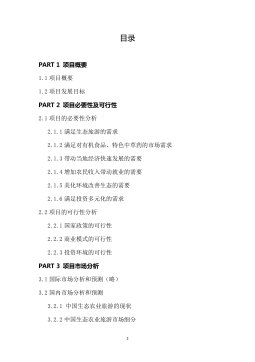
 2024-12-31 30
2024-12-31 30 -
牛奶创业计划书VIP免费
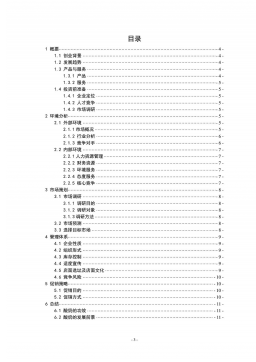
 2024-12-31 6
2024-12-31 6 -
南京现实版开心农场VIP免费

 2024-12-31 8
2024-12-31 8 -
绿色蔬菜农产品批发创业计划书VIP免费
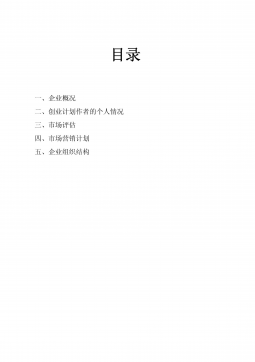
 2024-12-31 10
2024-12-31 10 -
绿色农产品销售创业计划书VIP免费
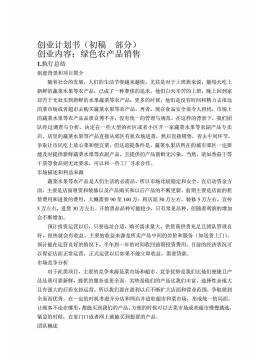
 2024-12-31 8
2024-12-31 8 -
xx蔬菜配送有限公司创业计划书样本VIP免费
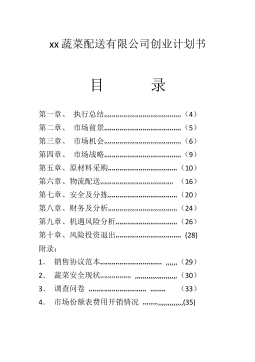
 2025-01-09 5
2025-01-09 5 -
现代农业生态园创业计划书范文VIP免费
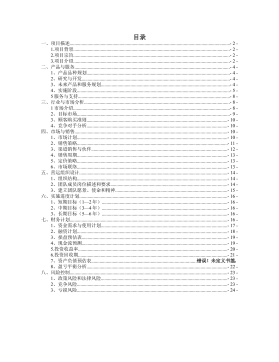
 2025-01-09 12
2025-01-09 12 -
农场创业计划书模板VIP免费
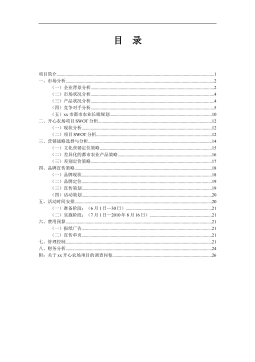
 2025-01-09 17
2025-01-09 17 -
奉节县特色农产品电子商务创业计划书模板VIP免费
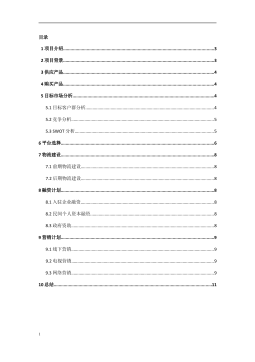
 2025-01-09 13
2025-01-09 13 -
中国首家IT高科技化农林项目商业计划书VIP免费
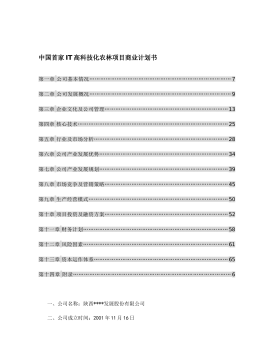
 2025-01-09 11
2025-01-09 11
作者:赵德峰
分类:高等教育资料
价格:15积分
属性:75 页
大小:693.99KB
格式:PDF
时间:2024-11-19





